How CHEOPS will investigate planet-hosting stars
18 July 2019
As launch approaches for ESA's Characterising Exoplanet Satellite, CHEOPS, scientists are rounding off the observing plans for the mission, with the science themes of the core programme announced recently and proposals for guest observations for the first year of CHEOPS operations under evaluation.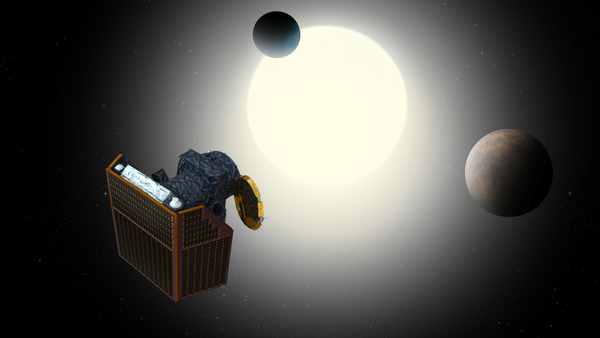 |
| CHEOPS, ESA's first exoplanet mission. Credit: ESA/ATG medialab |
Observing stars that are known to harbour planets with unprecedented accuracy to characterise their planetary population – this is the main goal of ESA's upcoming CHEOPS mission, scheduled for launch between 15 October and 14 November. But how exactly is the mission going to achieve this?
"The majority of science observing time on CHEOPS is dedicated to a programme meticulously crafted by the mission Science Team, and focussed around important themes in current exoplanet research," explains Kate Isaak, CHEOPS project scientist at ESA.
"In addition, 20% of CHEOPS time is reserved for observations by the scientific community worldwide. Between March and May, scientists submitted their proposals to the first call for Guest Observations, with the results of this competitive process to be announced later this month."
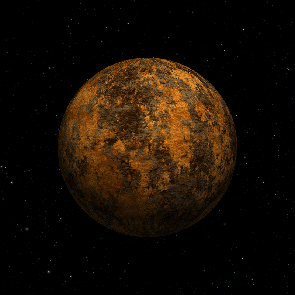 |
| What kind of exoplanets will CHEOPS study? Credit: ESA. |
The mission's chief objective is to investigate the structure of exoplanets larger than Earth and smaller than Neptune. CHEOPS will do this by observing the planets as they transit in front of their host star, using a technique called ultrahigh precision transit photometry.
By monitoring the starlight dim during a transit and then increase again, it is possible to determine the planet's size which, combined with the mass – known from independent measurements – provides a measure of the planet's density. Density is the key quantity CHEOPS is after in order to start characterising the nature of these planets – for example, discerning lava worlds or rocky Earth-like planets from gas planets or ocean worlds.
Unlike previous exoplanet satellites, such as the CNES-led CoRoT or NASA's Kepler and Tess missions, CHEOPS is not a 'discovery machine' but rather a follow-up mission, focussing on individual stars that are already known to host one or more planets.
"By targeting known systems, we know exactly where to look in the sky and when in order to capture exoplanet transits very efficiently," says Willy Benz, CHEOPS principal investigator at the University of Bern, Switzerland.
"This makes it possible for CHEOPS to return to each star on multiple occasions around the time of transit and record numerous transits, thus increasing the precision of our measurements and enabling us to perform a first-step characterization of small planets – in the Earth-to-Neptune size range."
Searching for exoplanet transits
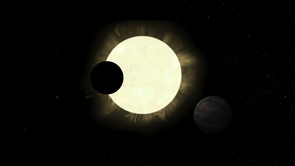 |
| Exoplanet transit. Credit: ESA |
The two major themes of the CHEOPS core science programme – which is also referred to as the Guaranteed Time Observing (GTO) programme – are centred on determining the bulk properties of planets, in particular their densities, using transit observations.
About 10% of the programme will be dedicated to planets that were previously discovered via ground-based observations using the so-called radial velocity technique, but were not yet observed as they transit in front of their host star. The radial velocity technique infers the presence of a planet from the wobble it imparts on the star, allowing us to estimate the planet's mass. Depending on the inclination of their orbit, a fraction of these planets crosses the disc of their parent star as viewed from the perspective of an observer on or near Earth, so scientists will observe their host stars with CHEOPS at exactly the times when such a transit is expected to take place.
For some planets, we have already measured both transit and radial velocity, but even in these cases CHEOPS can still make a huge difference. Knowing when and where to point, the mission can gauge the sizes of these planets with much greater accuracy, improving our knowledge of their density and enabling scientists to refine models of planet formation and evolution. With these measurements physical information about the planets' atmospheres may be retrieved as well. This part of the programme, taking up roughly a third of the core science time, will focus primarily on small planets, planets with peculiar characteristics, and multiple planetary systems.
"After two decades of planet discoveries, with CHEOPS we enter the era of exoplanetology, delving into the physical and chemical properties of planetary systems beyond our own," says Didier Queloz, chair of the CHEOPS science team, from University of Geneva, Switzerland.
Exoplanet atmospheres and other features
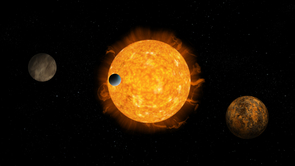 |
| Artist's impression of an exoplanet system. Credit: ESA |
Understanding the true nature of exoplanets and enquiring into their potential habitability requires not only knowledge of their internal structure, but also a study of their atmospheric properties. CHEOPS is not equipped with a spectrograph to analyse the chemical composition of planetary atmospheres. Nonetheless, its observations allow for a first-step examination by studying the phase curve of a planet's host star, or how the light that is measured changes over the full orbit of the planet.
Depending on the planet's position with respect to the parent star, the total light collected by CHEOPS will include a varying fraction of light reflected off the planet – none during a phase known as secondary eclipse, when the planet is hidden from view, and some shortly before and after this phase. These data enable scientists to determine some interesting properties of the planet's atmosphere, for example evaluating the presence of clouds. Around a fourth of the core programme will be dedicated to these observations, focussing on the brightest stars in the CHEOPS list of targets.
About 10% of the program will be dedicated to characterising special features of particular planets, such as the presence of moons and rings or the tidal stretching caused by the host star's gravitational pull.
New discoveries and additional science
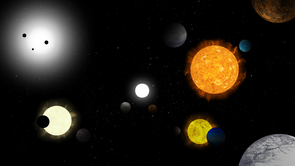 |
| Exoplanet imaginarium. Credit: ESA |
Although CHEOPS is primarily a follow-up mission that will concentrate on the characterisation of known exoplanets, it also has a significant discovery potential. Around 15% of the core science programme will be dedicated to the search for new planets around bright stars using a variety of different approaches: from targeting multi-planet systems and planetary systems hosting massive planets orbiting very close to their host star – the so-called hot Jupiters – to exploiting a technique known as transit timing variation (TTV) to find additional exoplanets in a known system via the gravitational perturbations these exert on the targeted transiting planet. It will also make it possible to search for so-called exo-trojans – small celestial bodies sharing the orbit of a known exoplanet.
Finally, the rest of the time, the satellite will be devoted to non-time critical observations from other research areas such as stellar physics and planetary science, each with a particular relevance to exoplanet studies.
"The ensemble of themes provides us with a comprehensive scientific programme with which to explore the diversity of exoplanets and make progress in our understanding of planet formation, evolution and the emergence of life in the Universe," adds Queloz.
In addition to that, proposals that will be selected as part of the ESA-run Guest Observers' (GO) programme will contribute further avenues to be investigated, advancing our knowledge of exoplanets and enabling many new discoveries to come.
"With the satellite ready and the observing programmes in great shape, we are eagerly waiting for the launch of CHEOPS and for the science harvest to begin," concludes Isaak.
Notes for editors
CHEOPS is an ESA mission implemented in partnership with Switzerland, with important contributions from Austria, Belgium, France, Germany, Hungary, Italy, Portugal, Spain, Sweden, and the United Kingdom.
80% of the science observing time on CHEOPS is dedicated to the Guaranteed Time Observing (GTO) programme, defined by the CHEOPS Science Team. The remaining 20% is made available to the astronomical community in the form of an ESA-run Guest Observers' (GO) programme, with proposals selected via a competitive peer-review selection process.
For more information, please contact:
Kate Isaak
CHEOPS Project Scientist
European Space Agency
Email: kate.isaak![]() esa.int
esa.int
Willy Benz
CHEOPS Principal Investigator
University of Bern, Switzerland
Email: willy.benz![]() space.unibe.ch
space.unibe.ch
Didier Queloz
Chair of the CHEOPS science team
Observatoire de l'Université de Genève, Switzerland
Cavendish Laboratory, University of Cambridge, UK
Email: dq212![]() cam.ac.uk
cam.ac.uk





